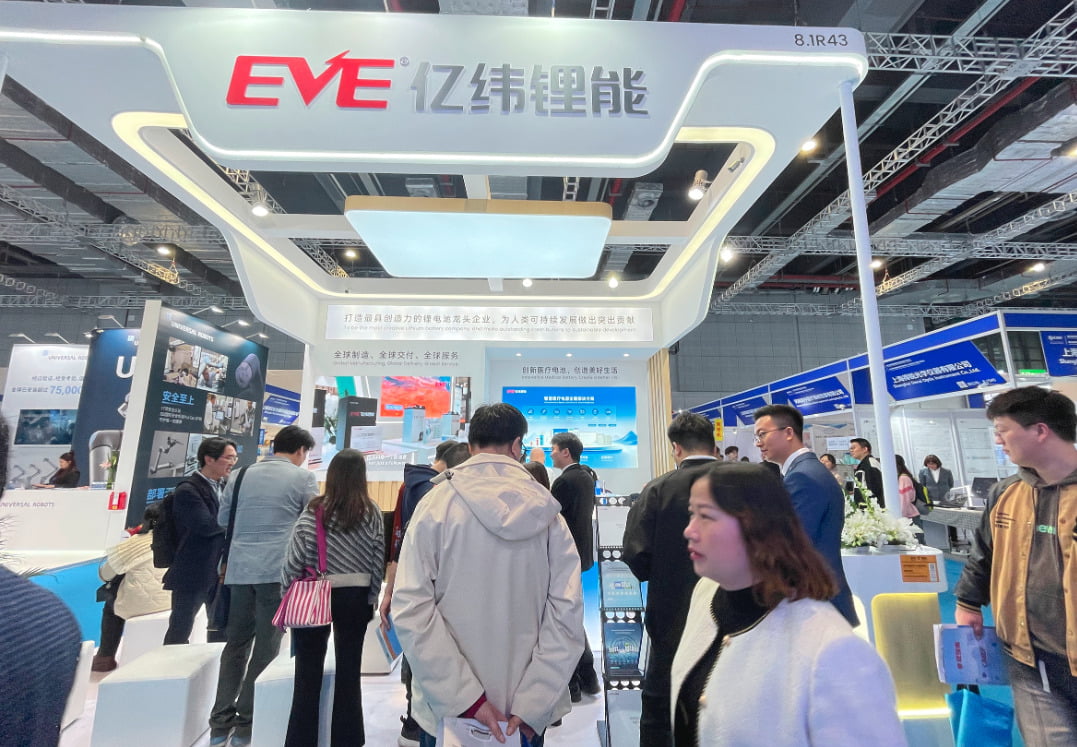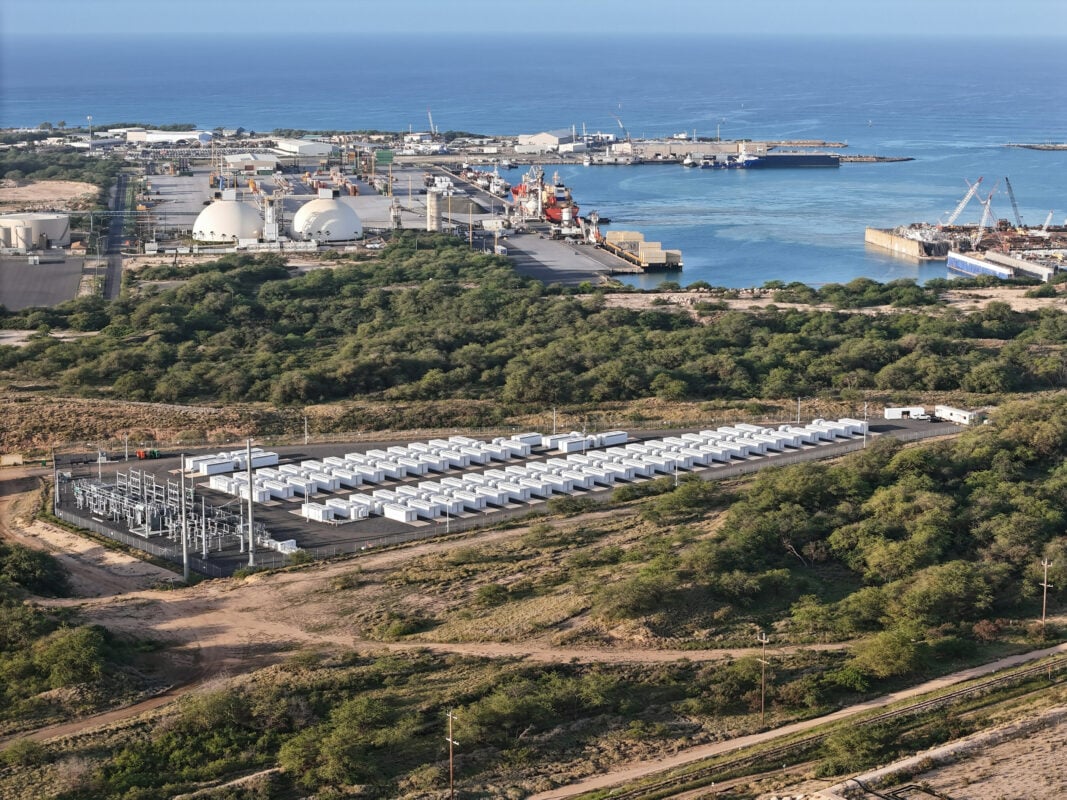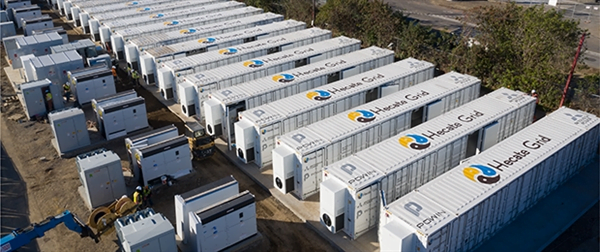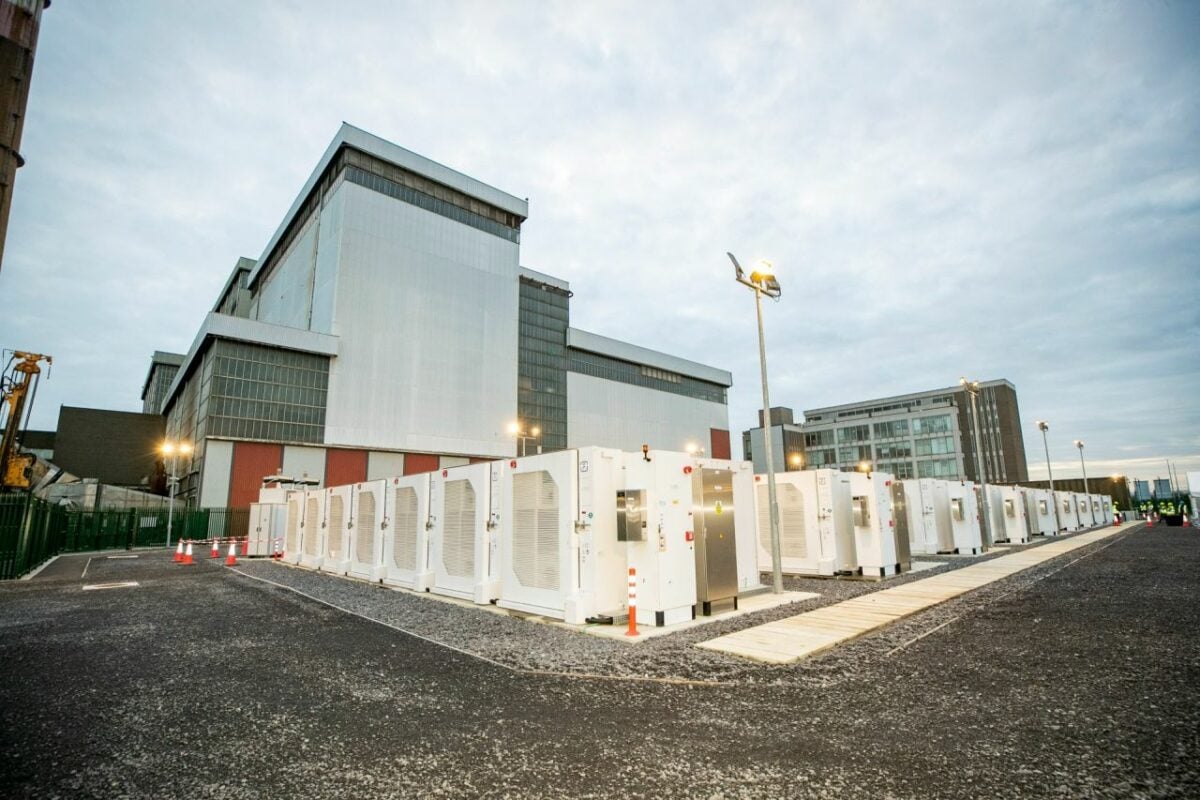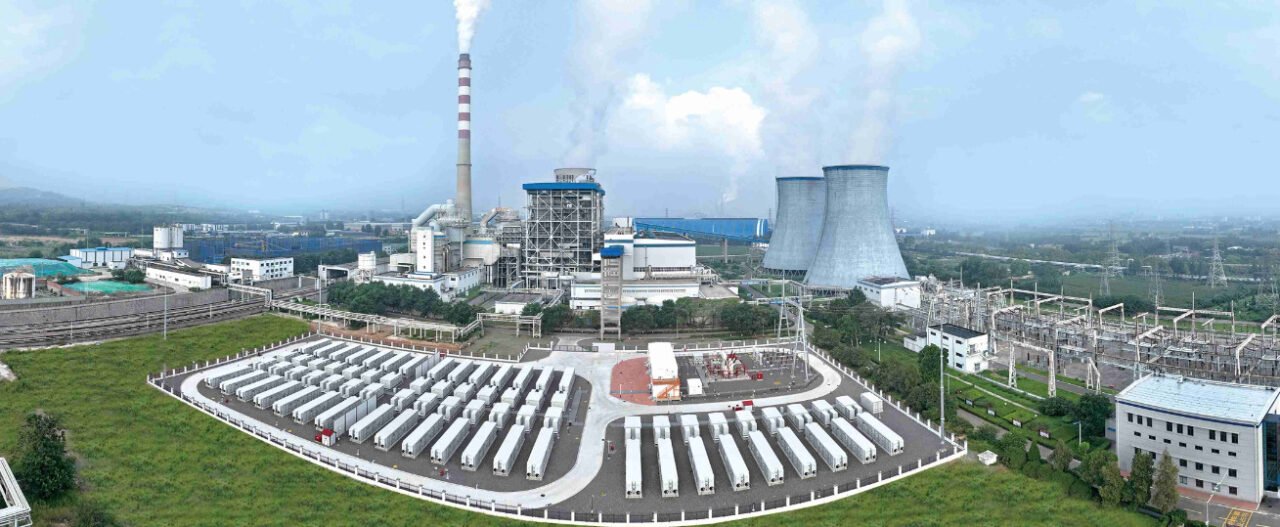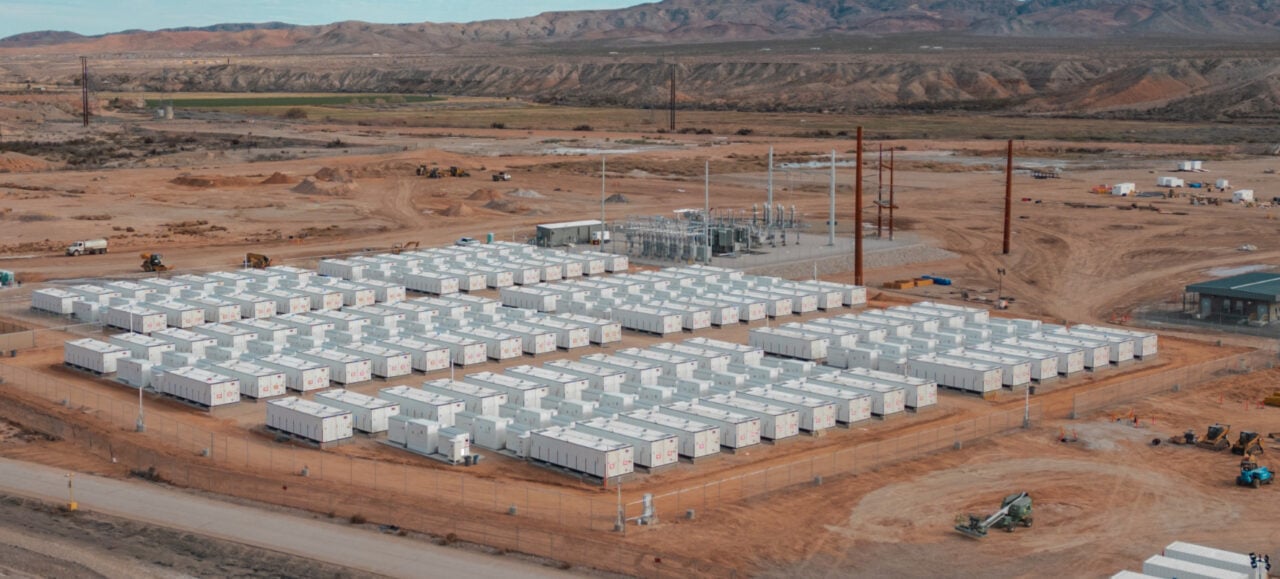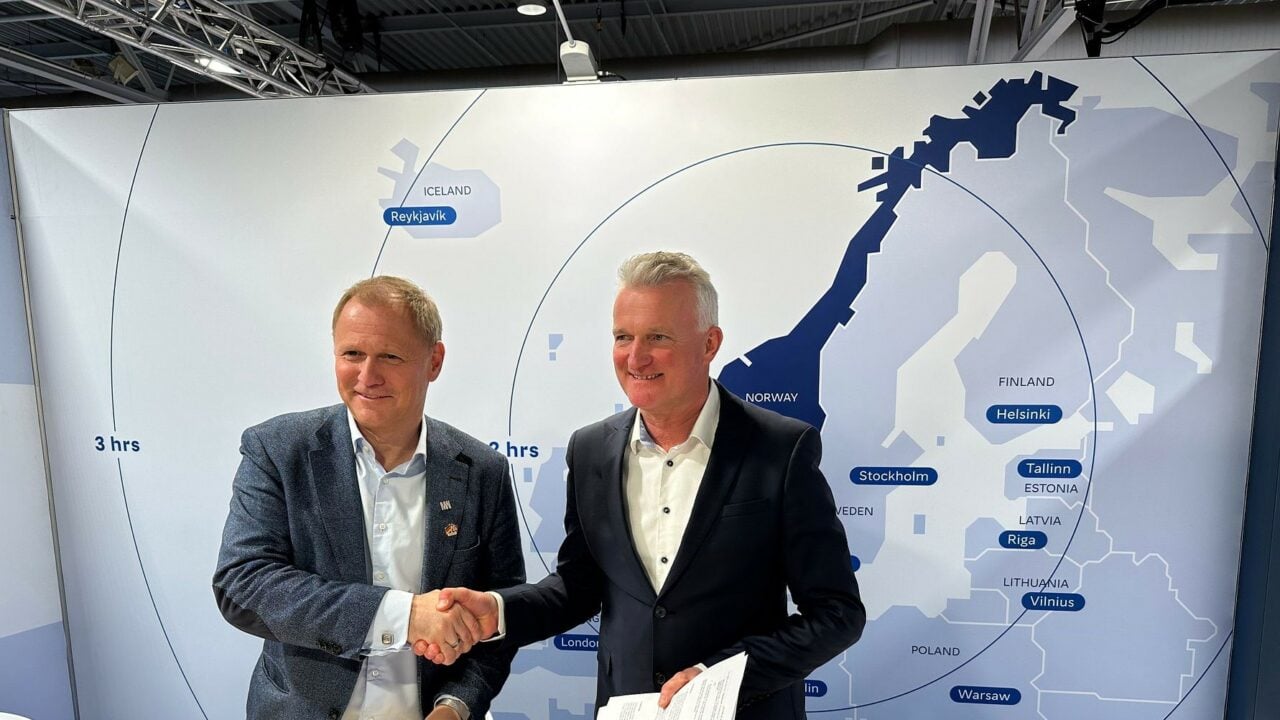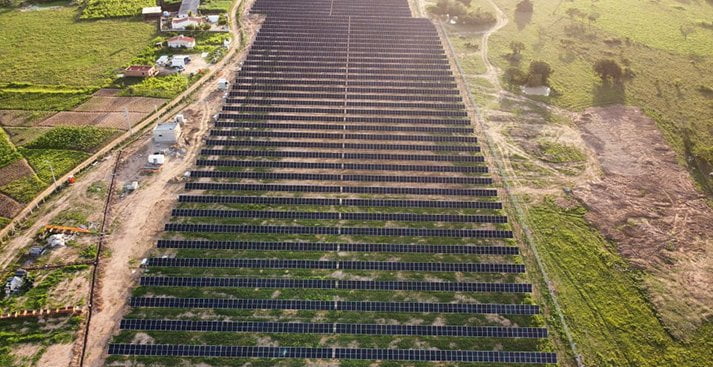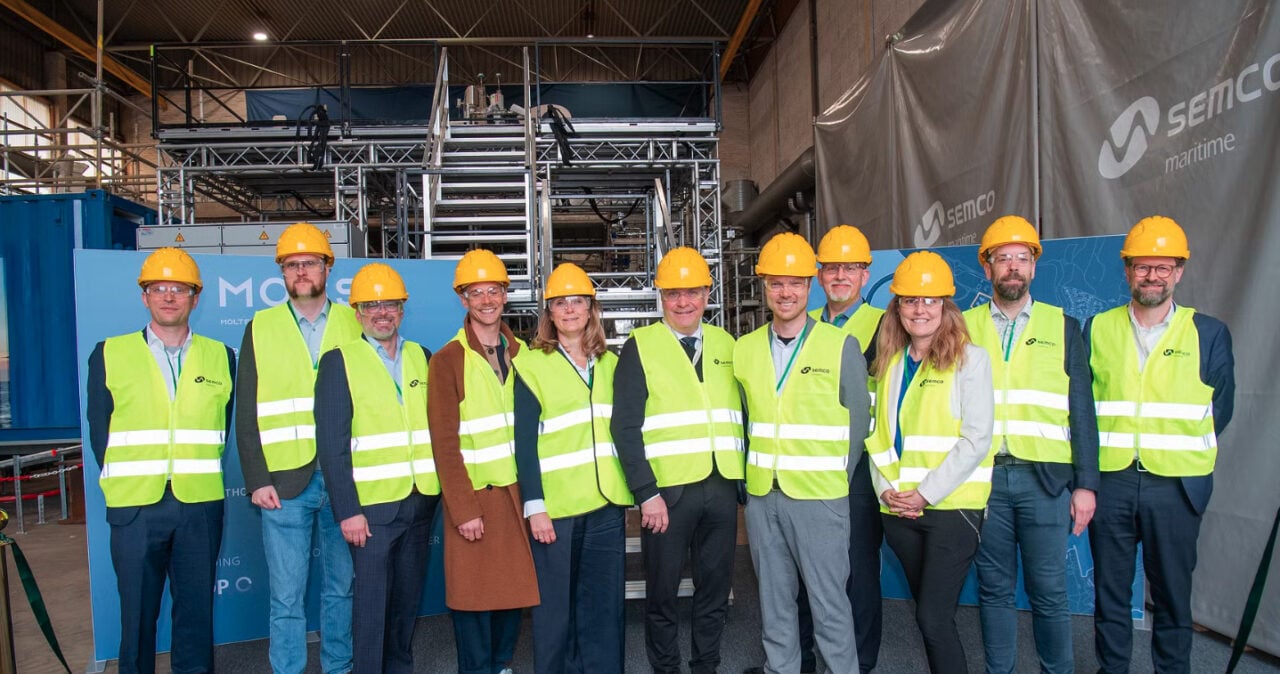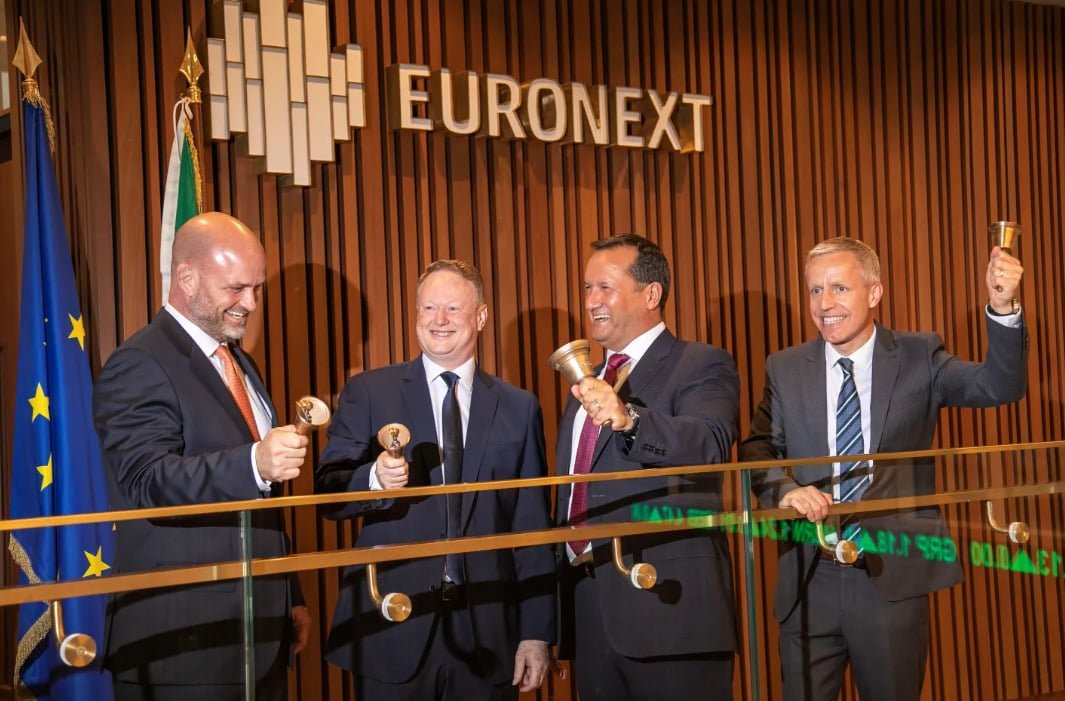Although its release didn’t clarify the year-on-year growth that the 10.5GWh figure represented, in 2022, it reported 7.7GWh of BESS shipments, indicating growth of around 36% year-on-year.
Eve Energy, meanwhile, manufactures battery cells for energy storage and has its own BESS products. Over the course of 2023, the company shipped 26.29GWh across both. The company also has ‘power battery’ and ‘consumer battery’ divisions.
In Q1 2024, Eve’s energy storage shipments grew 113% to 7.02GWh, and for the full year, the division is set to reach 50GWh of shipments.
The company said that 60-70% of its energy storage shipments are to the overseas market. That is part of a trend of China-based BESS providers increasingly gaining global market share.
Energy-Storage.news interviewed Sungrow’s ESS Europe director at Solar Media’s Energy Storage Summit EU 2024.
See a deep-dive into Sungrow’s 2023 results by our sister site PV Tech here.
Energy-Storage.news’ publisher Solar Media will host the 2nd Energy Storage Summit Asia, 9-10 July 2024 in Singapore. The event will help give clarity on this nascent yet quickly growing market, bringing together a community of credible independent generators, policymakers, banks, funds, off-takers and technology providers. For more information, go to the website.
Tesla deployed 4.1GWh BESS in Q1, storage and generation is highest-margin business line
That represented a 4% year-on-year increase from 3,889MWh deployed in Q1 2023. In each quarter of last year, storage deployments exceeded 3GWh, and the full-year 2023 total was given as 14.7GWh in January’s most recent financial reporting from the company.
Tesla said gross profit for the segment was up 140% year-on-year, despite a continuing decline in solar deployments. Solar PV deployments slumped to just 40MW in the previous quarter, and figures weren’t even provided for solar in the latest shareholder deck for Q1.
The company also noted that energy generation and storage remains its highest-margin business line, perhaps a bright spot in an otherwise challenging quarter for its EV business. It was a similar story in Q3 2023, as the EV business slowed, but quarterly energy storage deployments hit a then-record of 3,980MWh.
Vehicle production was down 2% and deliveries 9% year-on-year, although Tesla did see increases in its non-vehicle mobility-related products: supercharger stations and supercharger connections were up 26% and 27%, respectively, for example.
Energy generation and storage revenue for Q1 was just over US$1.6 billion, a 7% increase from US$1.5 billion in Q1 2023, while automotive revenues fell 13% from last year’s equivalent period, from just under US$20 billion to US$17.4 billion.
Total revenues for the quarter, also including “services and other income,” fell 9% to US$21.3 billion from Q1 2023, and gross profit was down 18%. With the company largely focused on ramping up manufacturing and advancing products, like full-self driving (FSD) and research and development, a year-on-year increase in operating expenses of 37% contributed to a 21% decline in adjusted EBITDA across all business lines.
California Megapack factory to complete 40GWh ramp this year
Musk said in an earnings call that the EV market is under pressure globally from depressed adoption rates, while Tesla is ramping up production of its ‘affordable’ Model 3 EV. The CEO was bullish that while other automakers are pulling back on EVs, and instead turning to plug-in hybrids, Tesla believes “this is not the right strategy, and EVs will ultimately dominate the market.”
“Despite these challenges, the Tesla team did a great job executing in a tough environment and energy storage deployments of Megapack, in particular, reached an all-time high in Q1 leading to record profitability for the energy business,” Musk said.
“And that looks likely to continue to increase in the quarters and years ahead. It will increase. We actually know it will … significantly faster than the car business as we expected.”
Tesla has a dedicated Megapack factory in Lathrop, California, and as of the start of this year its annual production capacity had reached 20GWh, and by the end of this year expects to ramp that too, to 40GWh.
The company also plans to start construction on a Megapack factory in Shanghai, China, and according to various reports, work on that is set to begin in May.
S&P Global’s top five rankings of BESS system integrators released in Q3 last year put Tesla third globally for installed projects as of July 2023. The company was behind Chinese PV inverter manufacturer and BESS integrator-manufacturer Sungrow, and Fluence, which is owned by shareholders including German engineering group Siemens, US IPP AES Corporation, and a Qatari sovereign wealth fund.
According to Sungrow’s latest results, the Chinese company shipped 10.5GWh of BESS in 2023, while Fluence, publicly listed like Tesla, doesn’t release deployment figures, only financials. Fluence is set to make its next financial results report 8 May.
Conference call transcript by The Motley Fool.
US takes ‘significant step forward’ to speed up electricity transmission project permitting
The DOE will serve as a coordinator between federal agencies and developers. Furthermore, it said that it will work with “relevant agencies” to produce a single document for NEPA-compliant environmental approvals that suits each agency and removes the need to duplicate administrative work.
More broadly, the CITAP programme will require a “comprehensive public participation plan” to encourage developers to engage with communities and tribes in their proposed development areas “at the outset of the project”. This will be conducted via an online portal, which will also allow federal agencies to view and provide input on documents in the early stages of grid project development.
Eric Beightel, permitting council executive director, said: “The ambitious clean energy goals of the Biden-Harris administration cannot be achieved without the transmission infrastructure needed to deliver renewable energy to consumers. This rule is a significant step forward in bringing coordination and accountability into the permitting review of these vital projects.”
To read the full version of this story, visit PV Tech.
Ireland: ESB Networks says energy storage on grid now exceeds 1GW
Large-scale battery energy storage projects and Turlough Hill pumped hydro energy storage (PHES) between them help provide flexibility and support more renewables in Ireland’s electricity system.
Energy storage facilities are connected across the grid to both the transmission and distribution systems, which are managed by EirGrid and ESB Networks. ESB Networks, as a separately operated business unit of national state-owned utility Electricity Supply Board of Ireland (ESB), maintains and constructs the transmission network, while EirGrid is the transmission system operator (TSO).
As it stands, peak demand on Ireland’s electricity system is approximately 5.5 GW.
According to a report by the International Energy Agency (IEA), Ireland’s electricity demand has increased by 2%, making it one of the few countries in Europe to record an increase in 2023. Across the year, coal generation fell 17% YoY, alongside a modest 1.2% decline in gas-fired output.
Ireland is forecast to have the highest growth rate in Europe for electricity demand and consumption, with an average annual increase of almost 7%.
Interestingly, data centres are expected to contribute hugely to this, with the nation braced to see a rapid expansion in this sector. Irish data centres are estimated to have consumed around 5.3TWh of electricity in 2022, up by 31% from 2021.
This is around 17% of the country’s electricity demand and almost equal to the consumption in all urban dwellings, the IEA said.
Long duration energy storage (LDES) is the next logical step in adopting further energy storage assets, as the technology can store more and release more energy to the electricity network.
An example of one of the inaugural projects introducing long duration to Ireland is a 4-hour battery energy storage system (BESS) delivered by Fluence and Norwegian state-owned firm Statkraft in partnership.
The 20MW BESS, which is expected to be a “market first”, will be deployed in County Offaly, in the Republic of Ireland, at Statkraft’s 55.8MW Cushaling wind farm, which is already under construction. Fluence and Statkraft expect to finish construction by the end of 2024.
To read the full version of this story, visit Current±.
Get more visibility on the energy storage market for the Republic of Ireland with Solar Media Market Research’s dedicated Republic of Ireland Battery Storage Project Database Report.
Energy storage market grew faster than ever in 2023, BESS was most invested-in energy tech, according to BNEF, IEA
In both the IEA ‘Special report on batteries and secure energy transitions,’ and the BloombergNEF H1 2024 edition of its ‘Global energy storage outlook’ report, a key takeaway is that there was more investment in battery storage worldwide than ever before during 2023.
The IEA said 42GW of batteries were deployed across utility-scale, behind-the-meter, off-grid and solar home stationary energy storage installations in the year, and said that battery storage was the most invested in of all commercially available energy sector technologies in 2023.
Meanwhile, BloombergNEF counted annual energy storage deployments in 2023—excluding pumped hydro energy storage (PHES) and therefore largely comprising battery storage installations—at 44GW/96GWh.
BloombergNEF (BNEF) said that was roughly three times the amount tallied for 2022. It is forecasting a 60% jump this year to around 67GW/155GWh of global deployments in 2024, and a compound annual growth rate (CAGR) of the market to the end of the decade of 21%.
That means 2030 annual deployments of 137GW/445GWh and a cumulative installed capacity reaching 782GW/2,205GWh by the end of that year. Energy storage will grow much faster than solar PV or wind, for which the analysis and research group have predicted 8.9% and 6.6% CAGRs, respectively, from 2024 to 2030.
APAC, China to lead deployments to 2030
The falling costs of grid-scale battery energy storage system (BESS) technology, a topic that has been much discussed recently on Energy-Storage news, will support growth, BNEF said. It found that as of February 2024, a 2-hour duration turnkey BESS in China cost an average of US$115/kWh, a 43% decrease from a year before.
With lithium iron phosphate (LFP) now firmly the lithium-ion (Li-ion) battery sub-chemistry of choice for the stationary BESS market, BNEF expects the share of nickel manganese cobalt (NMC) BESS systems to continue declining, representing only 1% of the global market by the end of the decade.
The Asia-Pacific region is set to lead deployments, driven by China and representing about half of all new additions. EMEA’s share will rise from about 11% this year to about 19% by 2030, while the Americas will be the slowest-growing market, seeing its share fall from about 28% on a gigawatt-hour basis in 2024 to 19% in 2030.
That said, by country, the US will be second only to China as the world’s largest market. China added 22GW/47GWh in 2023 and will get to 335GW/938GWh cumulative installations by 2030; the US added 7.4GW/22GWh in 2023 and will reach 134GW/484GWh cumulative deployments by 2030, according to BNEF’s forecasts.
Germany is going to be the third biggest market through this decade. The European country deployed 3.8GW/6.1GWh in 2023 and is forecasted for 62GW/109GWh cumulative installed base by 2030.
Electricity, transport: ‘Two pillars for decarbonisation’
IEA’s special report is focused on the broader theme of batteries’ importance to the global energy transition. The agency’s executive director, Fatih Birol, outlines in a foreword his belief that batteries’ impact will be most profound in the power and transport sectors.
Indeed, despite the ubiquity of batteries in modern life, including consumer electronics, the energy sector, including EVs and battery storage, accounts for 90% of lithium-ion battery demand today, up from around 50% just eight years ago in 2016.
The reduction in cost of Li-ion by about 90% since 2010, higher energy densities and longer battery lifetimes account for the technology’s dominance in both EV and BESS, with the IEA finding Li-ion battery prices have declined from US$1,400/kWh in 2010 to below US$140/kWh in 2023.
“The electricity and transport sectors are two key pillars for bringing down emissions quickly enough to meet the targets agreed at COP28 and keep open the possibility of limiting global warming to 1.5 °C,” Birol said.
“Batteries will provide the foundations in both areas, playing an invaluable role in scaling up renewables and electrifying transport while delivering secure and sustainable energy for businesses and households.”
However, to be on track to meet those climate targets, battery production and use needs to increase even more dramatically, the IEA said, requiring a sixfold increase in global energy storage deployments by the end of this decade. The agency anticipates that new capacity to comprise 90% batteries and the remaining 10% to come from PHES.
Further effort needed
BNEF found that despite the meteoric rise of battery storage, the technology still largely requires supportive policy frameworks, including but not limited to subsidies. It was the case that most, if not all, of the leading energy storage markets are regions with energy storage targets, BNEF said.
Similarly, the IEA said that while battery storage with renewables are cost-competitive with coal generation in India, for example, and will be cheaper than coal in China or gas-fired generation in the US in a matter of years, the costs still need to come down further to scale up deployment. The agency also noted that while investments in manufacturing have ramped up, the supply chains are still dependent on a limited number of countries, presenting risk if diversification of supply is not achieved.
BloombergNEF’s parent group Bloomberg said in January that major scale-up of battery manufacturing and supply chain investments are still short of what they need to be to meet global emissions targets, despite overall increases in investment in energy transition technologies.
Energy-Storage.news’ publisher Solar Media will host the 2nd Energy Storage Summit Asia, 9-10 July 2024 in Singapore. The event will help give clarity on this nascent, yet quickly growing market, bringing together a community of credible independent generators, policymakers, banks, funds, off-takers and technology providers. For more information, go to the website.
Energy Vault and NV Energy commission 440MWh Nevada BESS in ‘compressed schedule’
The BESS will help NV Energy manage peak demand periods on the grid. The utility, the largest public one in the state, will operate the project which utilises Energy Vault’s BESS hardware and software including its energy management system (EMS) Vault-OS.
Energy Vault described the construction process as a ‘compressed schedule’ while Jimmy Daghlian, VP renewables, NV Energy commented:
“The overall construction process moved very quickly – which allowed us to bring the project in service for our customers ahead of schedule and ahead of the hot summer months. We appreciate Energy Vault’s problem-solving spirit, commitment, and partnership in bringing this project to life.”
NV Energy was revealed as the owner of the project in December 2022 and construction started in Q2 2023. It is owned by investment firm Berkshire Hathaway, and readers may be familiar with it as one of the main offtakers for the Gemini solar-plus-storage project, one of the world’s largest.
Energy Vault is primarily known for its gravity-based long-duration energy storage (LDES) technology EVx, for which it is close to commissioning its first commercial project in China. The company moved into short-duration with BESS and multi-day LDES with green hydrogen because of a slow take-up of LDES technologies, CEO Rob Piconi explained in an interview last year (Premium access).
Norway’s Morrow in 5.5GWh LFP battery offtake deal for maritime, stationary storage applications
Nordic Batteries will initially make battery packs and storage systems customised for maritime and “demanding” industrial applications using the first commercial volumes of BEV2 brand LFP batteries Morrow delivers. It will also develop modules based on the cells.
Meanwhile the pair will also cooperate in sales and marketing, as well as exploring the possibility of joint production of modules. The offtake deal progresses a partnership formed with a Memorandum of Understanding (MoU) signed last year.
Morrow is building its first battery gigafactory in Arendal, Norway. It expects to begin production in the third quarter of this year and send the first cells to customer Nordic before the end of 2024. Nordic expects to have the first pilot line of its automated battery assembly line with 1GWh annual production capacity online in the second quarter of this year.
The company has so fair shipped cells from its Customer Qualification Line (CQL), including samples shipped to customers including Nordic Batteries for testing and validation since late last year.
Stationary ESS market quicker to access than EV, Morrow COO says
As noted in an Energy-Storage.news Premium interview with Morrow COO Andreas Maier in March, the startup is primarily targeting the stationary energy storage system (ESS) market as part of its go-to-market strategy.
Speaking with ESN Premium at the Benchmark Mineral Intelligence Giga Europe conference held in Sweden, Maier said that the ESS market is much quicker to access, with lower barriers to entry than automotive, with Morrow signing offtakes with system integrators working in the commercial and industrial (C&I) and residential space, such as Eldrift.
Morrow is able, like fellow Scandinavian gigafactory startups Northvolt in Sweden and Freyr in Norway, to harness cheap and abundant renewable energy to decarbonise its production.
In terms of supply chain, it still sources cathode active material (CAM) from China, but according to COO Maier is considering production of CAM for LNMO (lithium nickel manganese oxide) batteries, if those find a place in the market. The supply chain for LNMO is much easier to source within Europe, he said.
Morrow and Nordic Batteries signed their new deal at the Hannover Messe trade fair in Germany this week.
Developer Enerside sells Italy agriPV and BESS project to Chint Solar
The project is in Sardinia and is one of the largest single projects in Italy, Enerside said, with ready-to-build (RTB) status expected to be achieved in 2025. It spans 900 hectares and includes areas for crops and sheep grazing.
German consulting firm Capcora was sell-side advisor to Enerside for the deal, the value of which has not been disclosed.
Enerside entered into a joint venture (JV) with investment vehicle Alternative Green Energy Italy Holco 2 (AGE) in March last year for 2.6GW of solar PV projects in Italy, as covered by our sister site PV Tech.
Italy’s renewable energy development pipeline has grown substantially in the last few years with revised national clean energy targets, and the grid-scale energy storage pipeline has followed closely behind as a consequence.
Transmission system operator (TSO) Terna is launching a capacity market auction with EU funding, which will provide financial support for 8GW/71GWh of large-scale energy storage under 12-14 year contracts, discussed in detail on a panel at Solar Media’s Energy Storage Summit EU 2024 in London (Premium access).
Many of the first wave of BESS projects being built in the country are in Sardinia, including Enerside’s. These include a 1GW-plus portfolio from Enel, in which it recently sold a 49% stake to investor Sosteneo.
Enerside’s choice of a c.2-hour duration for its BESS is somewhat notable, as most projects in Italy appear to be going for at least 4-hour systems or more.
Molten hydroxide salt energy storage inaugurated in Denmark
After an inauguration ceremony the facility will be put into operation to demonstrate its ability to store energy charged from renewable power, which it can then discharge as heat or steam for either industry or the electricity system. Molten hydroxide generally melts at lower temperature than other kinds of salt, with Hyme claiming it is the first technology provider to enable its use for thermal energy storage.
Hyme is not the only company deploying molten salt energy storage projects at MW-scale in Denmark, however. Kyoto Group said in August 2023 that it was undergoing testing for its 4MW/18MWh molten salt energy storage project at the Nordjylland Power Station in Aalborg.
One-fifth of global greenhouse gas emissions are from industrial heat, according to the International Energy Agency (IEA).
The project has an energy storage capacity of 1MWh with a discharge capacity of 1.2MW of steam. It has been built at a port facility owned by Semco Maritime, a construction and engineering firm.
Other companies involved in the MOSS project were industrial product firm Alfa Laval, design studio Kirt x Thomsen, Swiss engineering firm Sulzer and nuclear technology firm Seaborg. Innovation network Energy Cluster Denmark facilitated the project with financial support from Denmark’s Energy Technology Development and Demonstration Program (EUDP).
See a video illustration of how the MOSS project works below, from Hyme Energy on Youtube.
[embedded content]
The company has further plans to build a project at the GWh-scale in future as part of an aim to commercialise its solution in 2026.
Hyme Energy is also deploying a larger, 1MW/20MWh project for utility Bornholms Energi & Forsyning (BEOF) for a 2024 completion date, although no update has been provided on that since it announced it in late 2022.
CAES developer Corre Energy hires Rothschild for investment process
The company is developing several large-scale CAES projects, including with large utility Eneco in Germany and the Netherlands and another in Denmark with five in total. Those three will be around 300-320MW of rated power and a discharge duration of around 3.5 days, meaning up to 27GWh of energy storage capacity, each. It also acquired a project in Texas last year.
The five projects in Europe led Corre to claim that it is the largest developer of energy storage in Europe, with those projects’ combined 100GWh-plus capacity being recognised in various transmission system operator (TSO) planning documents.
That achievement, plus its agreement to sell a 50% stake in the Germany project to Eneco and a construction milestones mean that the company was always going to attract attention, a source familiar with the matter said, indicating a de-listing could be on the cards.
“The listing was to raise development capital, not to have a share price,” they said. “There is a strong interest in investing in the company.”
As a listed company Corre Energy has had a mixed performance. Having listed in September 2021 at around €1.26 per share, it peaked at around €3.90 in February 2023 but now sits at around €0.72. The expressions of interest came in March after a rapid six-month fall.



